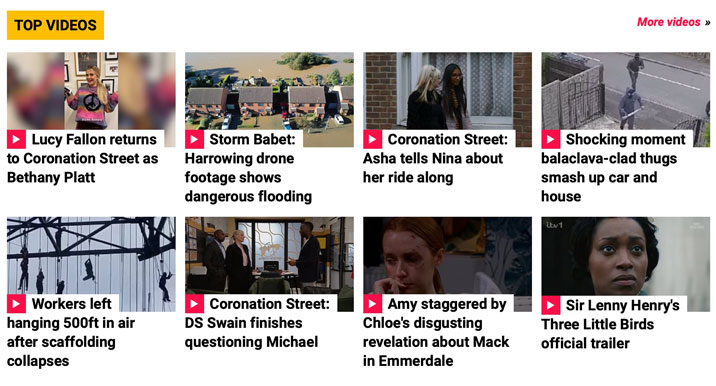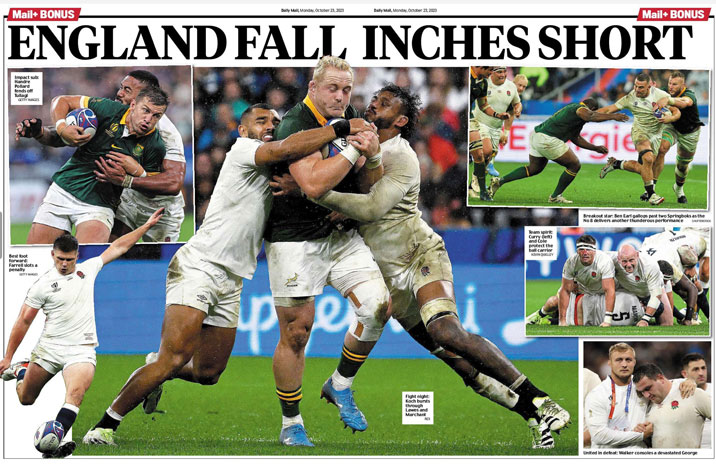
In 1848, the French weekly newspaper L’Illustration used an image on its front page of Paris during a workers’ strike. It was stunning. Not because of its black and white grainy street view with no people… but because it was the first time a photograph had ever appeared in a newspaper.
Since then, there have been colossal photographic milestones. The first 35mm camera, invented in 1925, freed photographers from bulky equipment and long set-up times and the age of photojournalism was born. In 1962, The Banbury Guardian made history as the first UK newspaper to use a colour photo on its front page but colour wasn’t the norm until the early 1990s. Around the same time, the first picture was uploaded to the internet. I remember taking a passing interest, as I was editing a daily paper, but had no grasp of how it could be relevant to what I was doing. All of my paper’s photos came from ten staff photographers and a handful of agencies. Our reporters weren’t allowed to ‘carry cameras’. I had been inspired by Harold Evans’s book ‘Pictures On A Page’ and fully believed in the power of the image. So, each job was carefully planned and we would end up with 40 or so photos a day. Every one was pored over in detail. The aim was to have a memorable, striking photograph to hold up each page. Since those days, universal internet access and the dominance of the mobile phone have changed publishing forever. Everyone with a mobile, that’s around 6.8billion people, is a photographer and videographer with instant access to publishing. Publishers can find pictures and videos of anything. Births, marriages, deaths, bomb blasts, altercations, crashes, celebrities, events, sport, sex, pranks … are all out there to be gathered.
High picture count
MailOnline, the world’s largest English-language newspaper website which reaches more than 225 million different people a month, would not be enjoying that massive success without photos and videos. Imagine, if you can, a text-only MailOnline. No story ever appears without a photo. I run the Mail’s training scheme where there is a huge emphasis on photos and video. I remember the publisher telling me that if people saw the headlines, bullets, photos and captions, they should get the whole story. All pitches by trainees must include images and we run sessions on the use of pictures, video, creating graphics, curation, caption writing, copyright and much more.
Ben Bailey, MailOnline editorial director, is unequivocal that images are critical to the site. He says: “Bright, bold and brilliant pictures are part of the MailOnline DNA.
“We average an astonishing 20 images per article across the site and it is not unusual for us to include more than 100 images in a single story.
“Our coverage is jam-packed with brilliant news, showbiz and sport imagery where we paint a picture for the reader and take them inside the story like no other publication can.”
He’s not wrong. While writing this article, I took a scroll through the Mail home page one evening and counted an astonishing 1,104 pictures and 74 videos. That was just the preview images, not clicking on any of the articles where thousands more are to be found. And then there are the American and Australian sites with their own home pages. Whereas the other newspaper websites might run fewer images on their home pages, the Mirror, Sun and Express are still using 200 plus and the Guardian more than 100.
Print and digital approaches
Across the corridor at the Mail is Metro. This year, the paper and website merged under the editorship of Deborah Arthurs. “Imagery in a digital space is a world apart from print,” she says. “The volume is vastly different, for starters. Online, we use half a dozen images on the average story, going up to 20 or more on a big breaking news event or showbiz story, as opposed to just one or two in print.

“Pictures online serve a somewhat different purpose to print. Both want to engage the reader and illustrate the story well, but as you turn the pages of a newspaper or magazine, you’re presented with the feature or news story in its entirety – the headline, subdeck, images, copy and captions – giving you an instant impression of what the story is about. Online, you have just a few words in a short headline and a picture – sometimes only a thumbnail – to capture your reader. That image has to work a lot harder to engage.
“Imagine readers being faced with hundreds, if not thousands of links on X, Facebook or Apple News. Imagery really helps us to stand out and gives the reader reason to click our story.
“It also helps them remember where they read something. Creating a visual identity helps with reader recall – something that’s a challenge for all publishers in a market where readers are finding content in so many different places.”
The saturation of images online has had an impact on print too. Whereas the Mail paper uses fewer images than its digital offspring, it is highly visual – striking a bold balance between the words and the images. It is happy to wipe out the front page for a stunning image. And MailPlus, the tablet edition, unrestricted by space constraints, regularly adds bonus picture spreads.

One of the most spectacular print changes has been at the Evening Standard in London. In June, it began using a dominant image – a photo, a cartoon, a graphic – on its front page every day.
Editor Dylan Jones has a magazine background, having been editor of GQ for 22 years, so such a change was perhaps unsurprising. But he explains: “The idea for the front page had less to do with magazines but to address the question of what a newspaper should look like in a world dominated by social media. We wanted to remind people we still had skin in the game, to attract youngsters and offer a front page that means something.”
In October, the Standard’s website was refreshed too – a home page dominated by large, compelling photos – often with no headline and a short explanatory caption.
Picture checklist
So that’s it then, the mass visual approach clearly works. What are you waiting for? But before you jump in headlong, it is worth a swift checklist.
Ian Day spent 30 years as a press photographer and picture editor, the last 16 at The Yorkshire Post, and now runs his own consultancy and training company. He offers a checklist for using images in the digital age:
- Quality: Quality photography will make any content stand out – high-resolution images ensure clarity and professionalism. Every article should carry a main display image. Low-resolution images will devalue an article in seconds. Blurry or pixelated images can negatively impact your credibility.
- Relevance: Don’t just place any stock image and hope it works. Don’t just use one image – consider adding a photo gallery or an infographic.
- Legal: Ensure that you have the rights to use the photograph and it is clear of any copyright infringement or legal issue.
- Consistency: Maintain a consistent visual style and tone. Look at image shapes and cropping. Nothing worse than an upright photograph cropped badly and squeezed into a wide shape. Ensure images are responsive and display well on various devices – an image may look great on a laptop but look badly cropped when viewed on a mobile.
- Captions: These are important and should not be overlooked. Stick to the 5W’s when writing the caption – who, what, where, when and why. Describe what is going on in the photo – and don’t forget to credit the photographer.
Deborah Arthurs certainly agrees on the stock images. She says: “I’ve long attempted to ban them on Metro. They are boring to look at, they are often rather clichéd and they are used across every publisher, making it very hard to stand out. The ‘laughing at salad’ stock photos have even become a meme of their own.”
Other considerations are that using more than 1,000 photos on the home page and changing them several times a day is time-consuming and expensive. MailOnline’s team has to sort accreditation, create cutouts, make montages, graphics and then, of course, there are agency, freelance and copyright costs.
Not everyone can afford that. In the regions, with circulations dropping and an uphill battle for page views, running a picture desk has become an expensive resource. Ian Day says: “It shows when you open a local newspaper or read their website. Handout mugshots used as the main page lead photograph, the same stock image of a building which has been used time and time again, and the constant use of submitted, out-of-focus, poor quality photographs. These publications once employed a team of staff photographers – all producing quality, professional photography every day of the week. Removing this talent has caused the quality and creativity to drop like a stone and disappear.”
And in the search for clicks, and chasing a young, social media savvy, audience … it is critical that the written word continues to thrive.
Apart from being crucial to our credibility, investigative work, campaigns, exposing the corrupt, shining lights in dark corners, holding those in authority to account is also essential for our democracy. Perhaps the next stage is to look at innovative ways to illustrate such stories. The story of photojournalism started 175 years ago but more changes have taken place in the last 25 years than in the first 150. Photographs have long been an integral part of the way news is presented and, more recently, video has been added to the mix. They have, of course, always remained secondary to the written word. In the next 25 years, that is almost certain to change.

This article was first published in InPublishing magazine. If you would like to be added to the free mailing list to receive the magazine, please register here.












